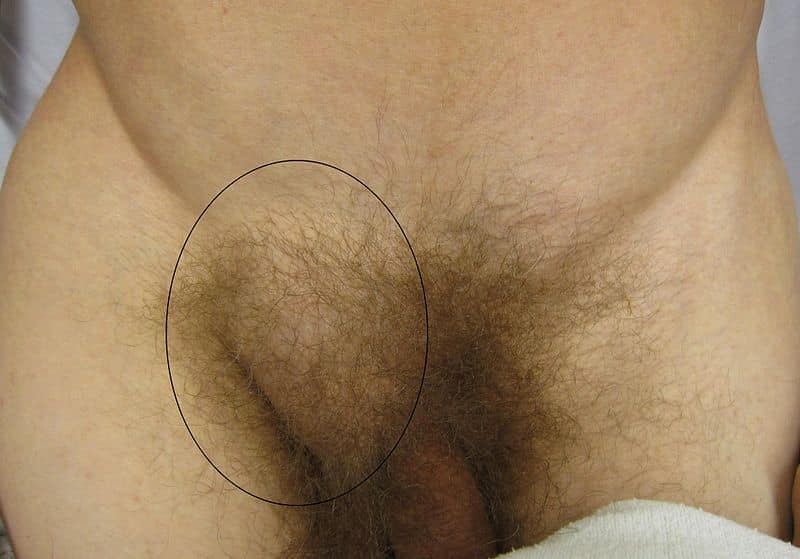Introduction
- Introduce yourself to the patient
- Wash your hands
- Explain the examination to the patient
- Reassure them that you will stop if it becomes too painful at any point
- Ensure verbal consent is adequately obtained
- Offer the patient a chaperone if required
Always work through a structured approach as below unless instructed otherwise; be prepared to be instructed to move on quickly to certain sections by any examiner.
Observation
Examine them standing first and ask them to lower their underwear
- Assess the patient from in front and from the side, on both sides, checking for:
- Obvious lumps or swellings
- Asymmetry
- Scars or skin changes
- Ask the patient to cough, to accentuate any hernia
Palpation
Examination of the Lump
If there is an obvious lump, examine that side first; remember to tell the patient exactly what are you doing throughout.
Important points to note are:
- One lump or multiple lumps
- Multiple lumps may suggest lymph nodes or possibly superficial lesions
- Consistency (hard or soft)
- Cough impulse*
- Reducible
- Pulsatile
- Able to palpate above it
- If able to get above it, likely to be scrotal swelling; if not able to get above it, likely groin swelling
*Remember that an incarcerated hernia will most likely not have a cough impulse (as by definition the hernia is trapped and immovable)
Examination of a Hernia

Figure 1 – A large right sided inguinal hernia
If you suspect a hernia, clarify the relation to the pubic tubercle:
- Above and medial = inguinal hernia
- Below and lateral = femoral hernia*
Repeat the examination for the other side of the groin (around 20% of inguinal hernias are bilateral)
Ask the patient to lie down; look to see if the lump reduces spontaneously at this point, as this will indicate a likely hernia
*Look for a small “pea-sized” lump in the groin, indicative of a femoral hernia. These are difficult to find because they are small, but have high rates of obstruction thus essential to look carefully for; they are often incarcerated and so rarely have a cough impulse
Differentiating Inguinal Hernia
An examiner may ask you about differentiating a direct from an indirect inguinal hernia clinically. This can be done by reducing the hernia, pressing over the deep ring (which is just above the mid-point of the inguinal ligament) and asking the patient to cough; theoretically if the hernia still protruded, despite occluding the deep ring, then this indicates a direct hernia.
However, this is extremely unreliable and the only definite method to differentiate them is at the time of surgery. Most importantly, it has no impact on management (the management for both is either surgery or conservative, whether it is indirect or direct makes no difference to clinical management)
Completing the Examination
To finish the examination, thank the patient and state to the examiner that to complete your examination, you would like to examine the external genitalia.
Examination of the external genitalia will assess for scrotal extension of the hernia and any genital lesions which may spread to the inguinal lymph nodes. Testicular lesions will drain to the para-aortic nodes, so will not be palpable
